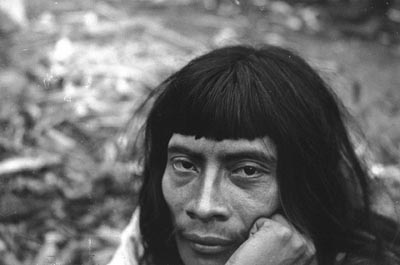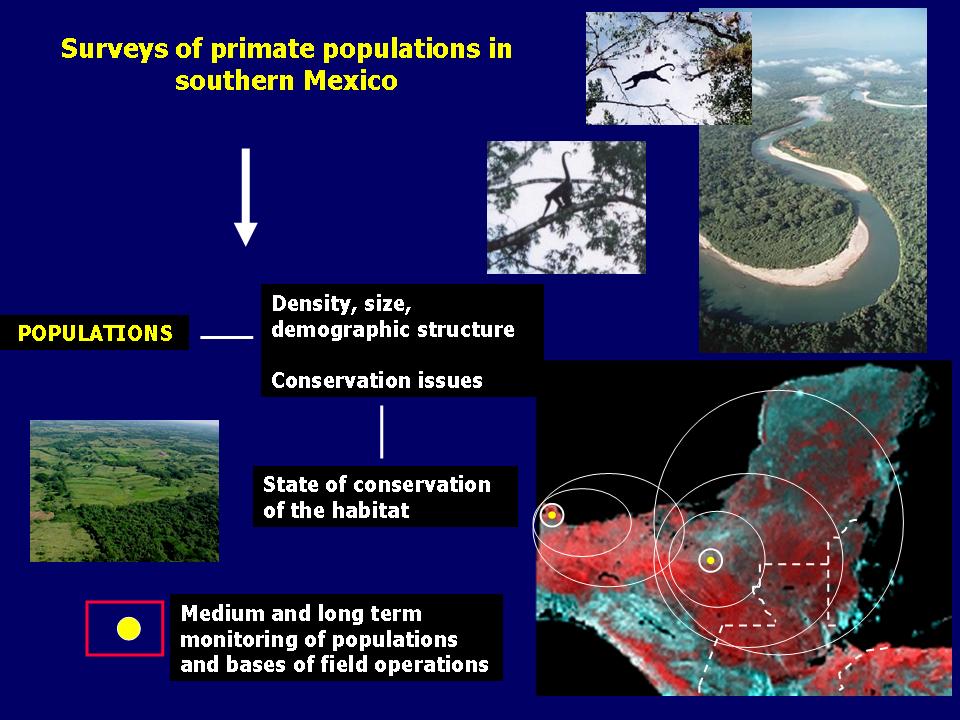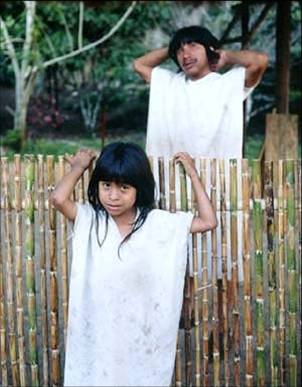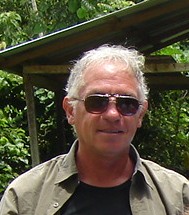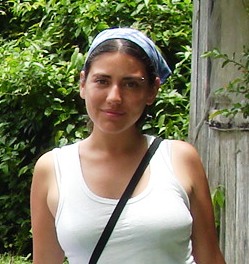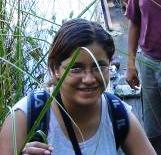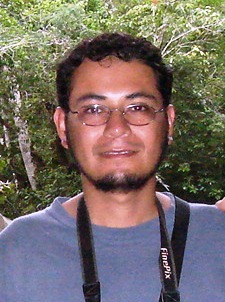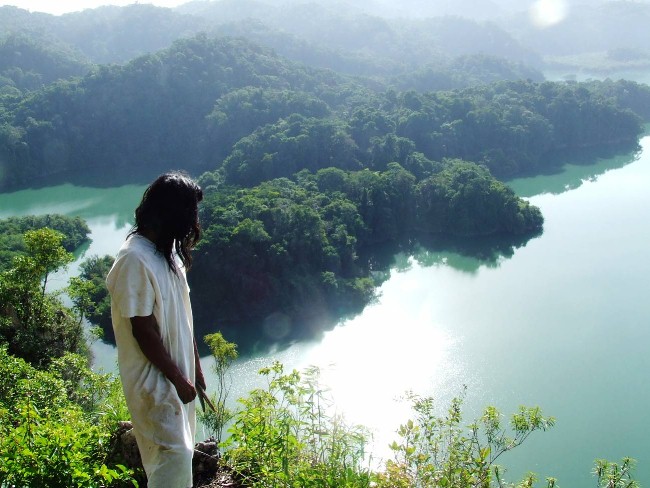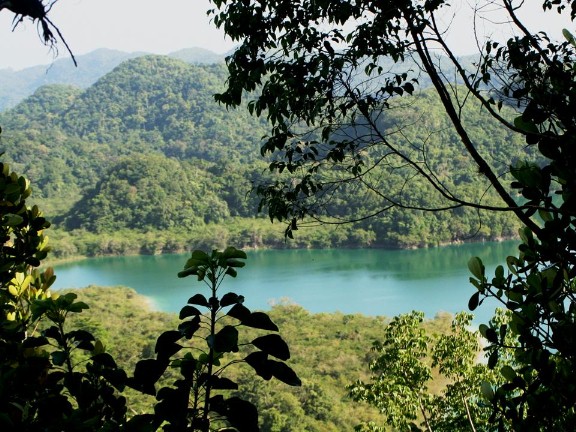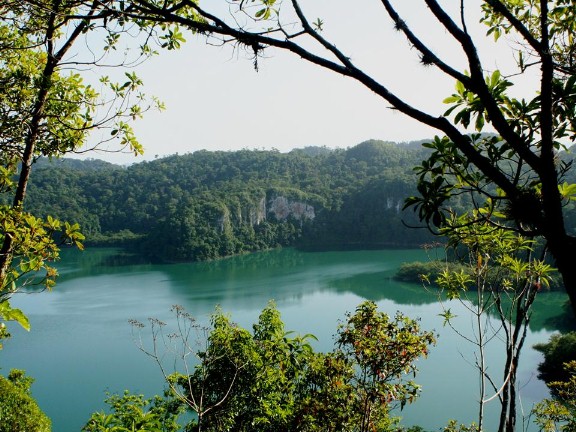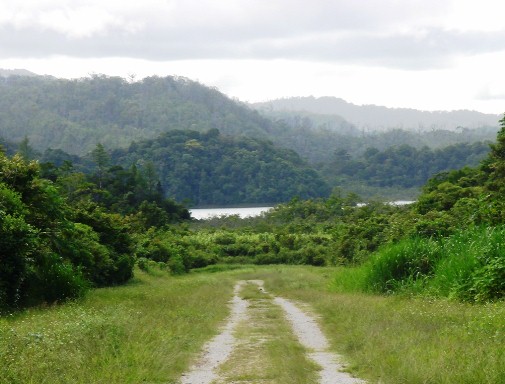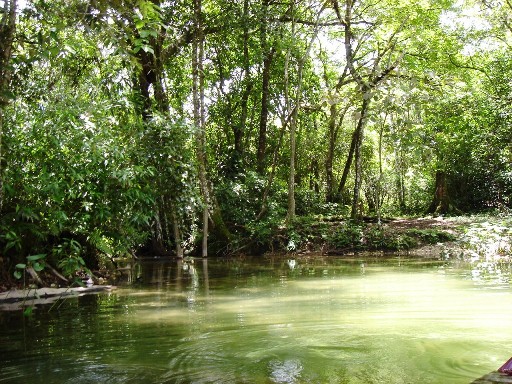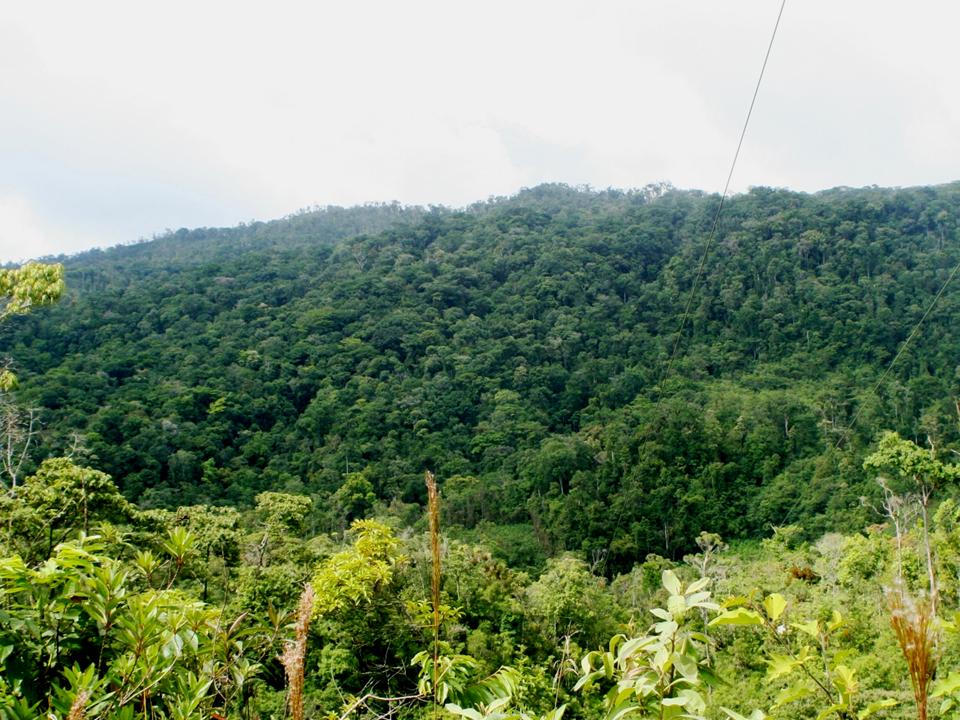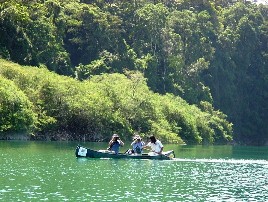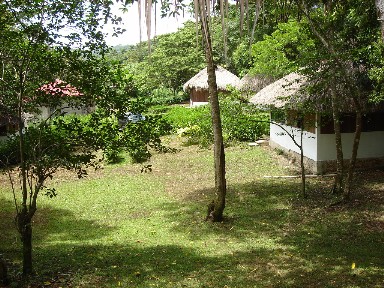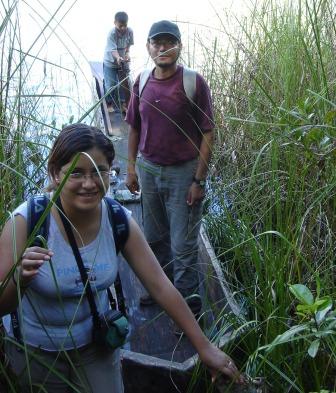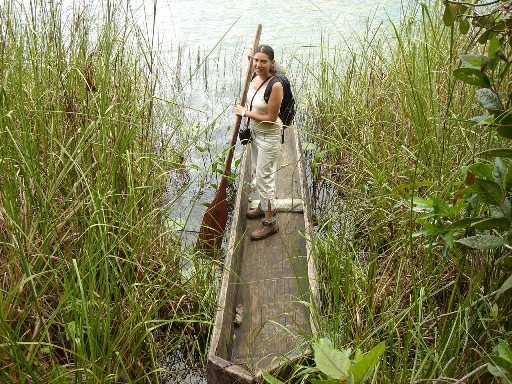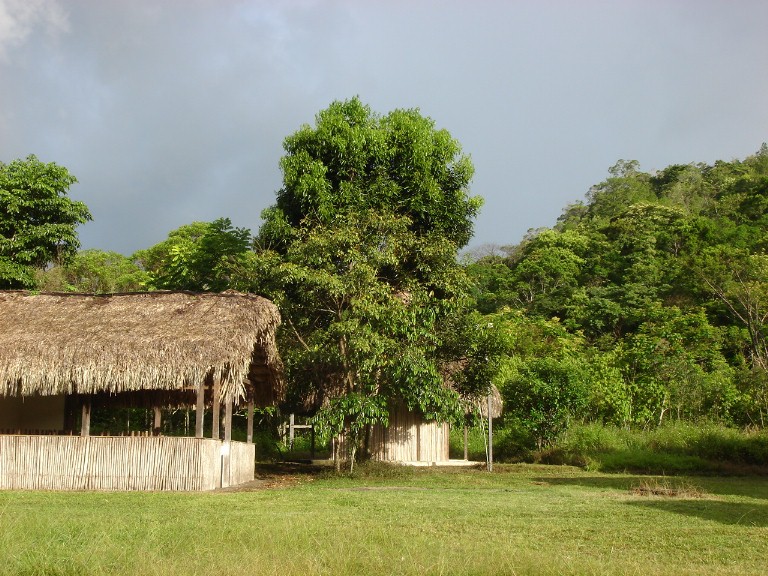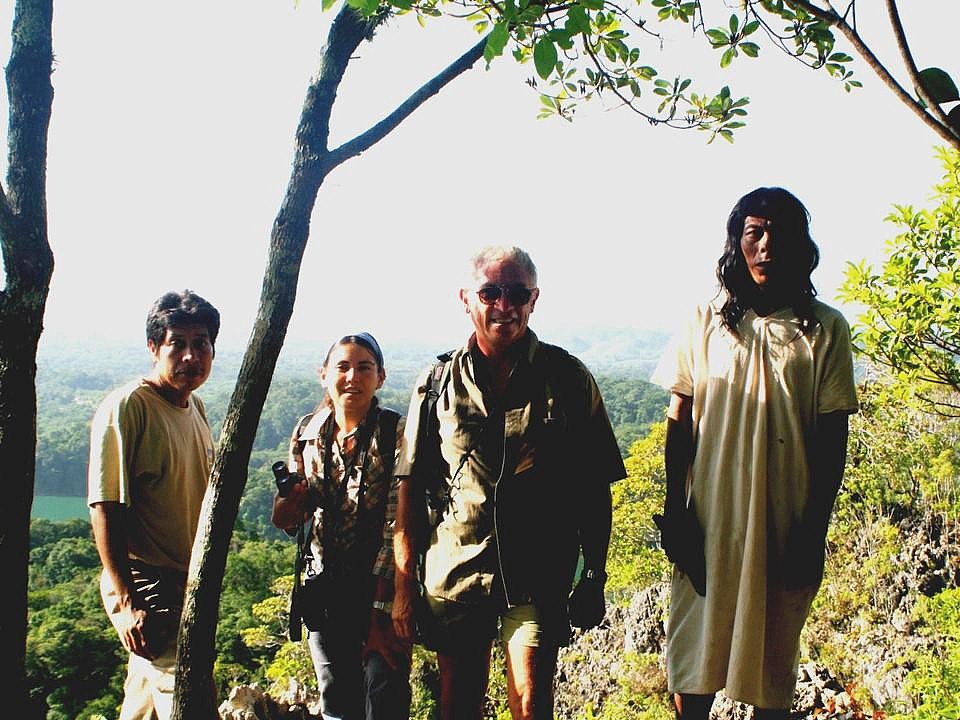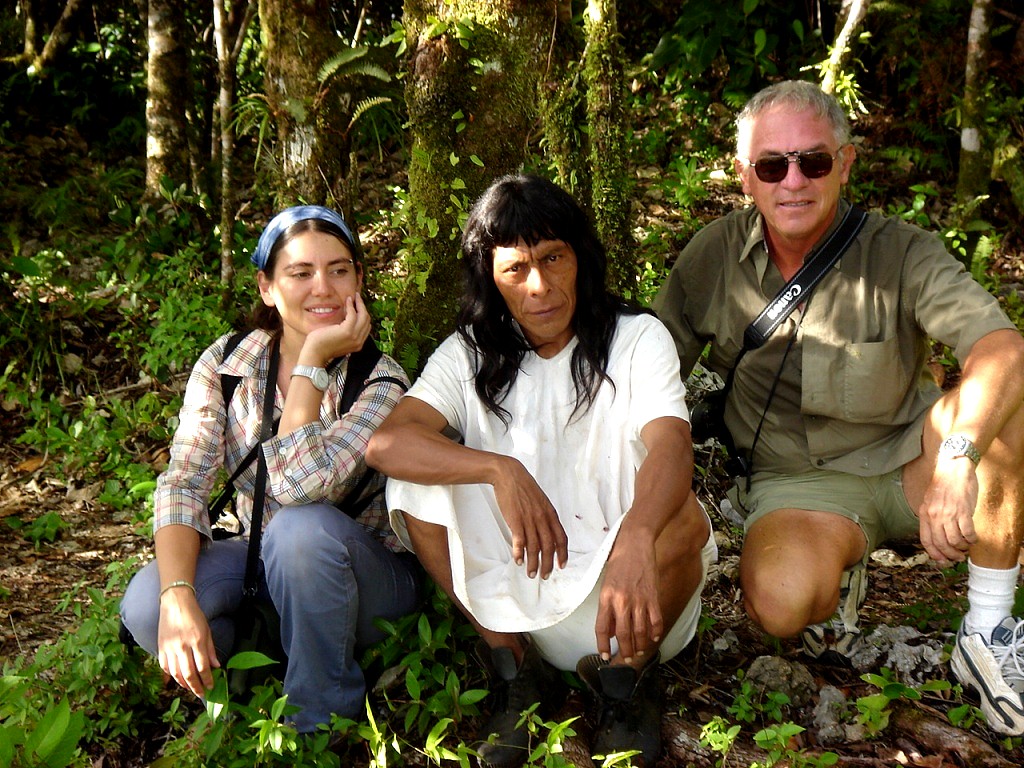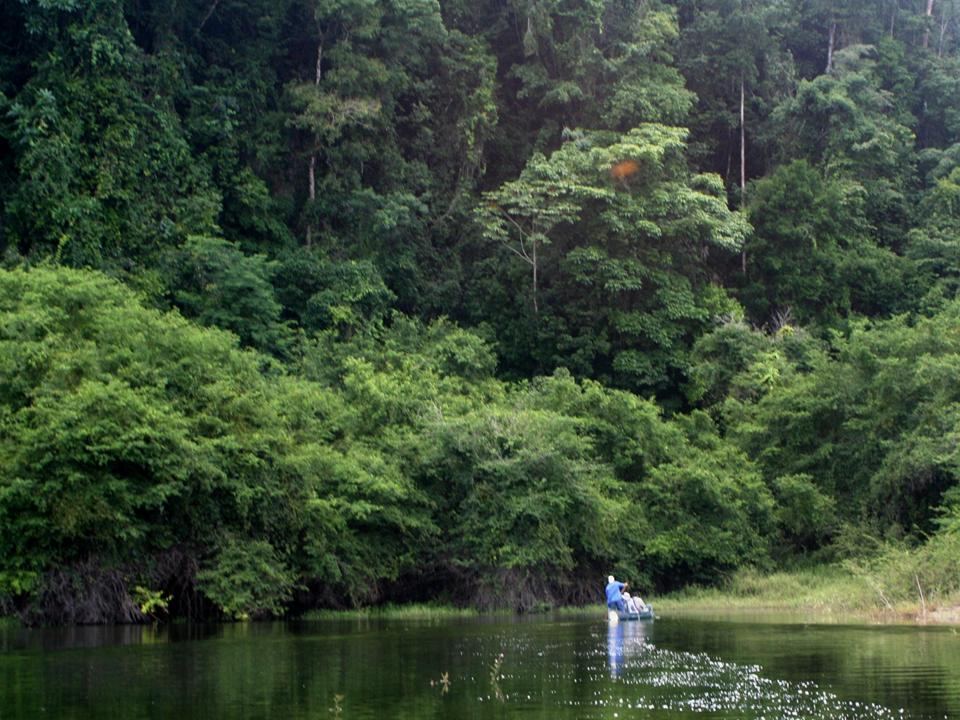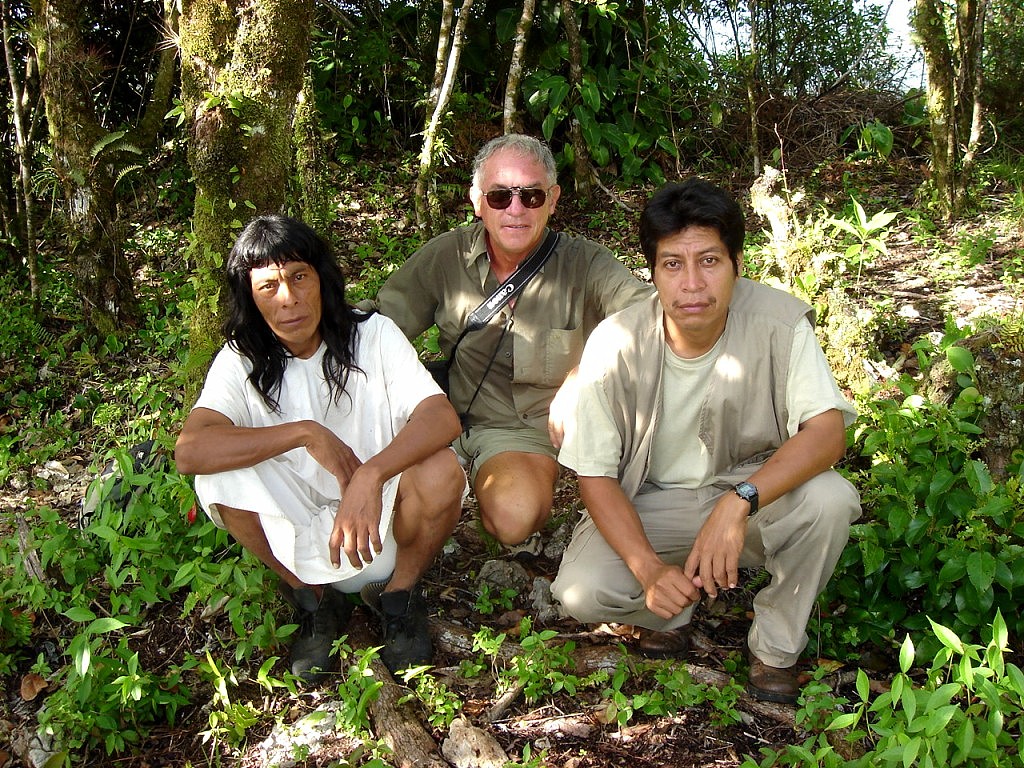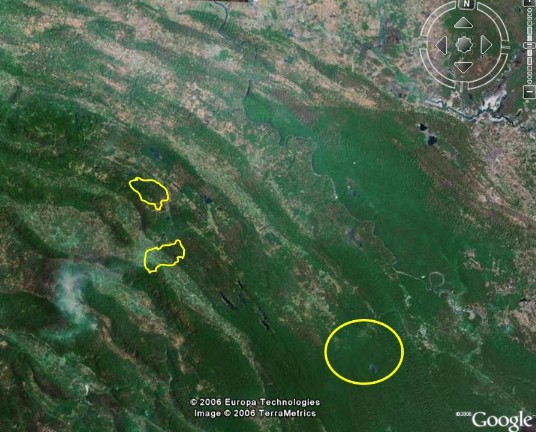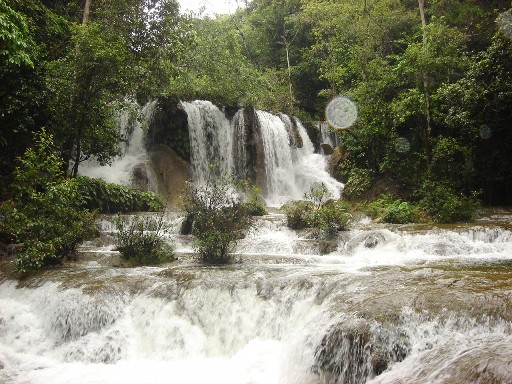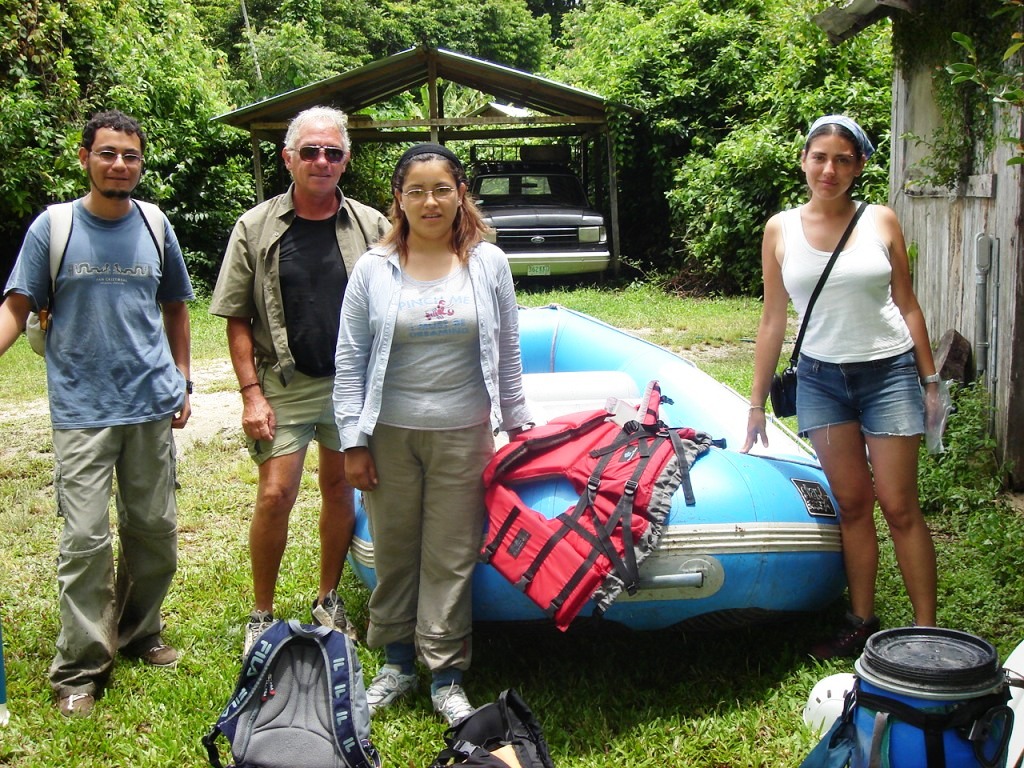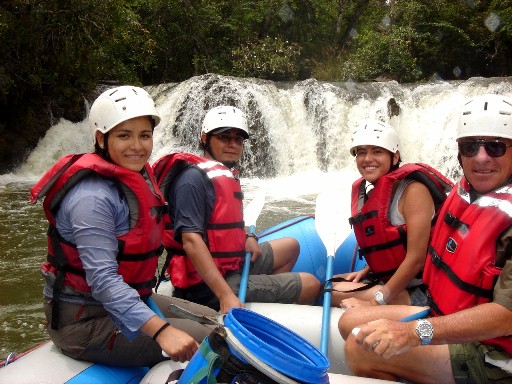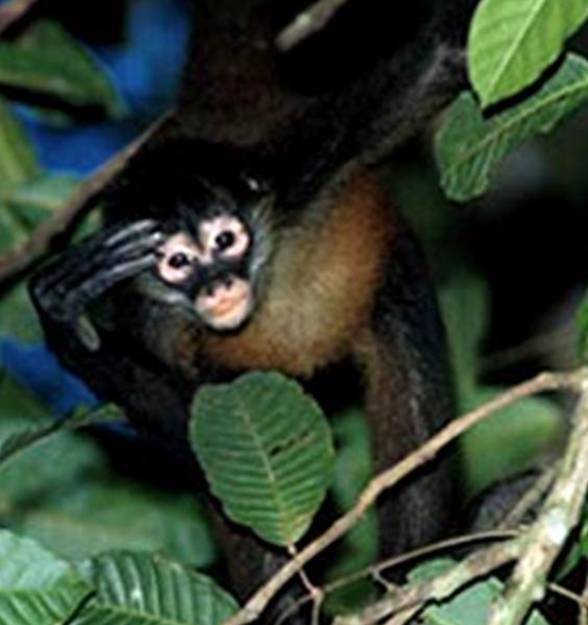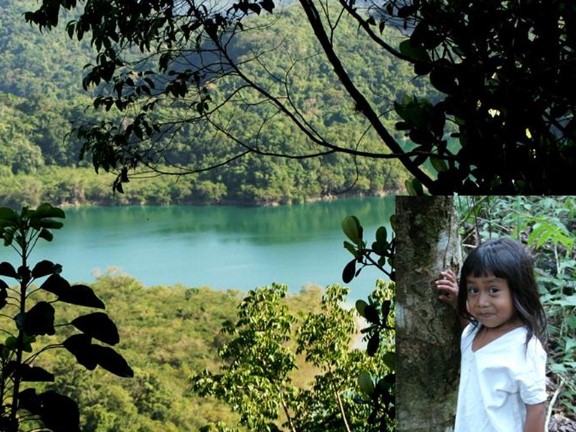|
Lacandon
forests and primate populations - 1st expedition (July
2006)
|
|
|
|
A major goal of our population studies is to map the current
distribution of populations of the three primate species that occur in
southern Having the field research station Los Tuxtlas
and Palenque NacionalPark
as bases of operation in southern Mexico, we have been conducting population
surveys in the forests (protected and unprotected) that still exist in
different regions of southern Mexico (see map). In many instances these actions have taken our
research team into hitherto unexplored regions in southern Here we briefly document a 1st expedition
to the territories of three Lacandon Indian
communities. |
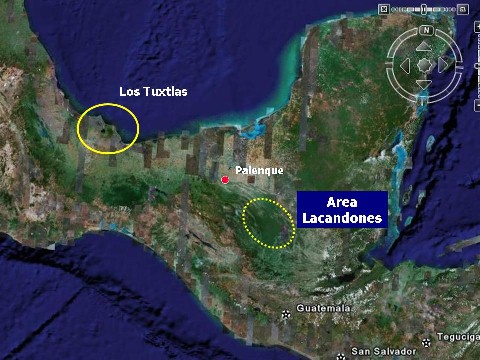
The satellite image to the right shows the
general location of the territories of the Lacandon indigenous
people. Also shown are the location of
The Lacandon
indigenous people
Currently there are about 700 Lacandon
indians in the Lacandon forests of sourhern
México. This is one of the smallest indigenous groups in
|
|
|
|
The Lacandons of the north
are those found in the communities of Métzabok y Nahá, and those of the south are found in the community of Lacanhá (see image below).
The most tradicional
communities are Métzabok
and Nahá.
They practice their own religion and ceremonies, prepare a ceremonial beer
- “balche”, made from the bark of a
Leguminosae tree - and are polygamous. They
recognize the existence of Christ whom they call Hesuklistos,
but he is considered a minor god
and the son of Äkyantho’, the god
of foreigners and their things in their cosmology.
Lacanhá
is the most southern
community and even though it is the most westernized community, the Lacandons still retain many of their traditions.
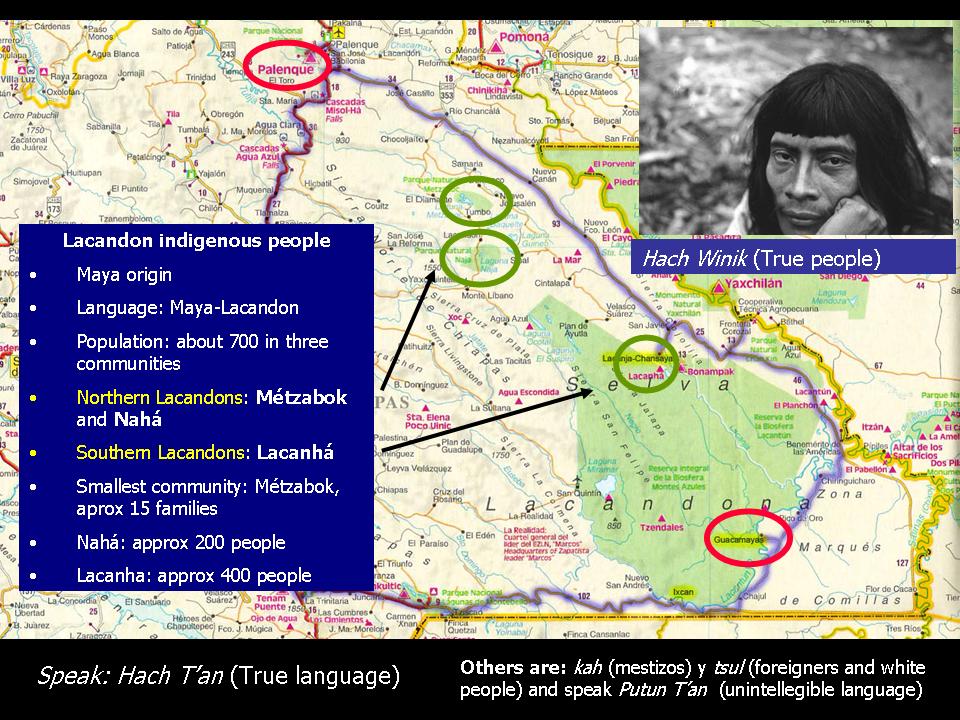
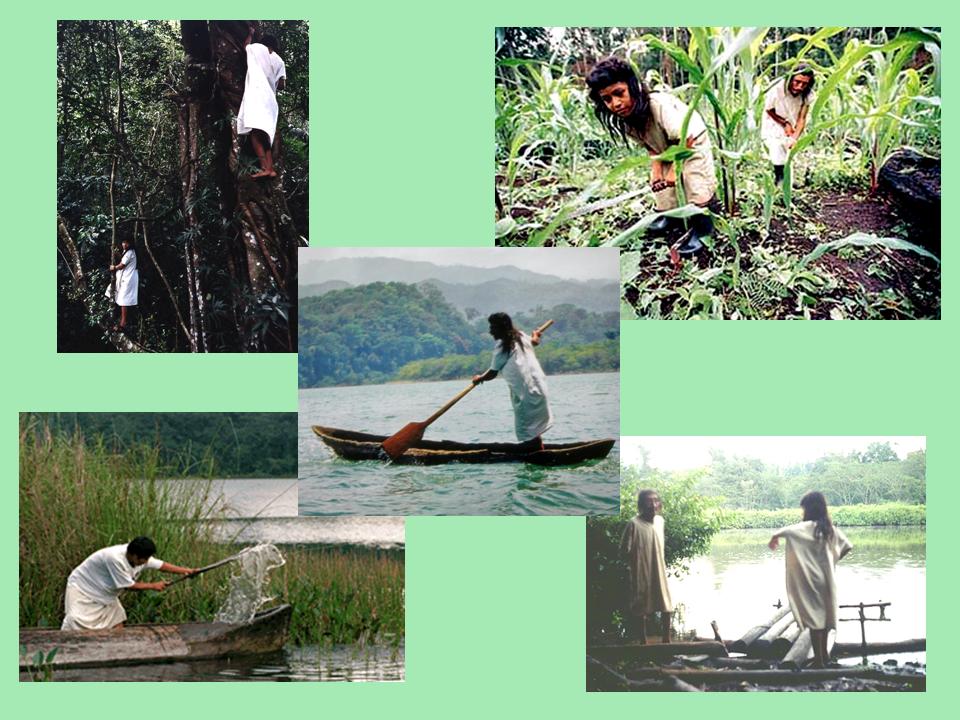
Recently the state
government has supported the development of projects of ecotourism in the three
communities. However, communities such as Métzabok
and Nahá are difficult to reach due to the hazardous
condition of the dirt road. Lacanhá can be more
easily visited due to the existence of a paved road leading to the community.
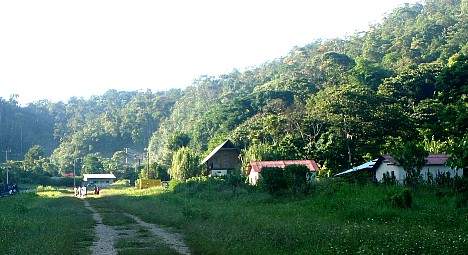 The evangelist religión has been promoted in the Lacandon
communities by missioners over several decades, and while resistant to change,
some segments of the Lacandon communities have
abandon their cultural traditions, including their own religion.
The evangelist religión has been promoted in the Lacandon
communities by missioners over several decades, and while resistant to change,
some segments of the Lacandon communities have
abandon their cultural traditions, including their own religion.
Currently and very recently the Lacandon
communities have electricity, schools as well as alternative subsistence
projects such as ecotourism and arts and crafts manufacture ‘
the two latter projects supported by state government initiatives.
Photo: Lacandon community of Nahá
Surveys of primate populations
Below are some photos of our survey team in this
expedition
|
|
|
|
|
|
Alejandro Estrada |
Genoveva Trejo |
Lesly Alejandre |
Octavio Cruz |
|
|
Métzabok
and Nahá
Each of the territories of
the Lacandon communities of Métzabok
y Nahá cover about
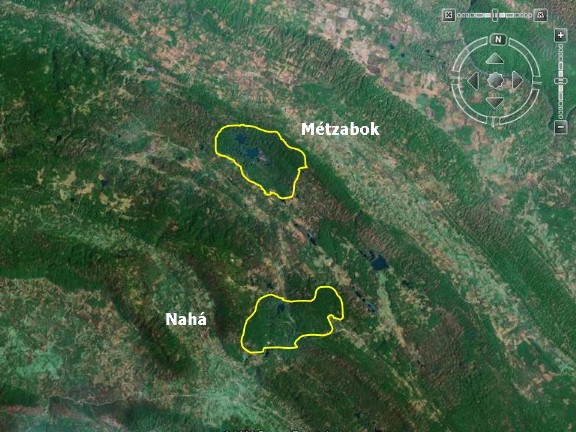
Sights of some of the landscapes of the
forested territorios of the Lacandon
community of Métzabok (upper row) and Nahá (lower row)
|
|
|
|
|
|
|
|
Field camps (middle photos) in Métzabok and Nahá.
In this first expedition, primate surveys were conducted using canoes borrowed
from the Lacandons, along the contour of the lakes in
their territories and by walking along some of their land trails.
|
|
|
|
|
|
|
Members of the Lacandon
communities acted as our field guides in the exploration of the forests in
their territories
|
|
|
|
Lacanhá. This
was the third Lacandon community visited in our
expedition. Lacanhá is found in the northern part of
the
|
The community
of Lacanhá (yellow circle) is found at a
considerable distance south of Métzabok y Nahá- shown these by the irregular yellow perimeters |
|
View of our camp site in Lacanhá
- located at the edge of the Lacanhá river, and a view of the forest protected by the Lacandons
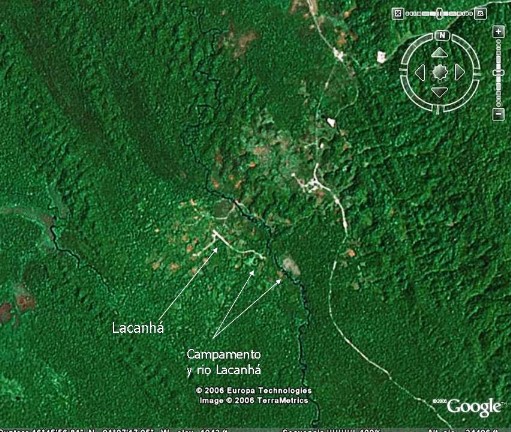
Satellite image showing the forested area where
Lacanhá is found and the location of the Lacanhá river, where our camp site
was located.
Using inflatable rafts in our surveys, we used
the river as a sampling trail running through the rain forest.
View of the falls and rapids along the
|
|
|
Our surveys resulted in the record of auditory and
visual contacts of black howler monkeys - Alouatta
pigra. The Lacandon
guides and other members of the communities indicated to us the existence of
several groups of this primate species. They also pointed out the existence of
spider monkeys - Ateles geoffroy - in their territories.
Subsequent surveys by our research team during 2006
and in 2007 will allows to gradually gather data on the size of the primate
populations and on their demographic structure.
|
It is clear that the forests of the Lacandon communities of Métzabok,
Nahá and Lacanhá have
retained their integrity as a result of a traditional and sustainable
management by the Lacandon people. This has resulted
in the conservation of the biodiversity present in their territories. It is
also evident that such traditional use of the forest has been sustained in
spite of the absence of a written language. Importantly, the perception of the
value of the forest in their daily life is palpable even amongst the youngest
members of the Lacandon communities.
|
|
|
Conserve the
Lacandon forests
copyright@2006 alejandro estrada
Regresar a la página anterior

